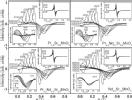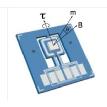Physical Properties Measurement System (PPMS)
A Physical Properties Measurement system (PPMS) is a flexible, open architecture instrument containing a number of physical property measurement techniques in one integrated casing, capable of simulating variable temperature/variable pressure/variable magnetic and electric field environments.
 How does it work?
How does it work?
Typically, the PPMS is able to conduct a variety of measurements, by containing a number of different experimental technologies. A typical PPMS is able to conduct simultanoues thermal, magnetometry and electro-transport measurements by containing a temperature controllable refrigerator, magnetometer, AC transport and resistivity, multi-function probe, and a number of optical and surface microscopes, for example confocal, scanning probe, atomic force and scanning hall probe microscopes.
Applications:
Automated simultaneous measurement of variety of functional properties, for example resistivity as a function of temperature (from 4.3K to 400K) or magnetic field strength, or specific heat capacity, or magnetic properties.
Sample handling requirements:
Sample must be interested into sample insert which contains pre-wired electronics in order to measure functional properties. Typically a number of sample holders are available (see example pictures), dependent on the measurement to be conducted. Samples less than 2mm x 2mm or 500mg mass are normally required.
Complementary techniques:
Differential Scanning Calorimeter, Confocal Microscopy, Atomic Force Microscopy.
Warwick Capability:
Contact:
Claire Gerard: c dot gerard at warwick dot ac dot uk / 07385 145064
Typical results format, and sample:
Status |
Availability |
 |
Warwick collect/analyse data |
 |
Warwick collect data |
 |
Available to user with expertise/ contribution |
 |
Spare capacity for collaborative research |
BOOK NOW |




